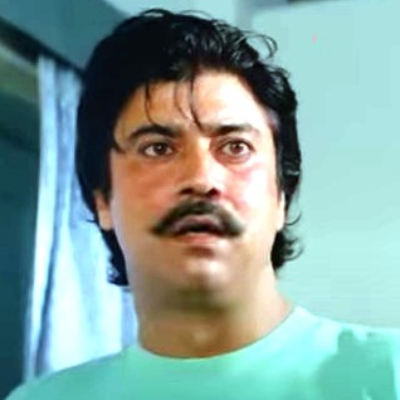K S Ashwath
Subscribe to read full article
This section is for paid subscribers only. Our subscription is only $37/- for one full year.
You get unlimited access to all paid section and features on the website with this subscription.
Not ready for a full subscription?
You can access this article for $2 , and have it saved to your account for one year.
- Real Name: Karaganahalli Subbaraya Ashwathanarayan
- Born: 25 March 1925 (Karaganahalli, Holenarsipur taluk, Mysore)
- Died: 18 January 2010 (Mysore)
- Primary Cinema: Telugu
- Spouse: Sharada
Remembered for his defining role as Chamayya meshtru or Chamayya master, K.S. Ashwath’s route to the film world came through his work in radio plays and theatre, like many others. With his many roles as a character actor, K.S. Ashwath had around 370 films to his credit in the five decades he was associated with the film industry.
K.S. Ashwath was born on March 25, 1925. He lost his mother at the age of two, with his father only 14 years old, and was raised by his aunt Thippamma. He studied at the Dalvoy School in Mysore and completed his B.Com. from Maharaja’s College in Mysore as well, where he obtained the seventh rank. A bright young man, he joined the movement for the country’s freedom from the shackles of colonialism. After a brief stint as a food inspector, he became a stenographer in the DC’s office for ten years.
K.S. Ashwath was active in radio plays with the Mysore branch of All India Radio, where he often enacted major parts in the plays of A.N. Murthy Rao and Parthavani among others. His film career came knocking when film director K. Subrahmanyam saw him in one of the plays and asked him to play a part in the 1955 release Stree Ratna, which also had the honour of being the first film to partially include colour in Kannada. Following his debut in this film, Ashwath plunged headlong into the film world. In 1960, he played the role of Swami in Kittur Chennamma (1961) with B. Saroja Devi as the lead. In Bhakta Prahlada (1967), he played Narada. Despite opposition from his family, who feared that he was giving up the security of a government job for a fickle career in the medium of cinema, he continued to make his way with his acting career. He was further tested in his resolve when his third child passed away due to a liver problem. Notwithstanding the blows dealt to him by fortune, he moved to Madras, the then happening hub of film production. On his occasional visits to Karnataka, he toured the district with his friends’ drama troupes.
Ashwath’s role in Gaali Gopura(1961) provided his fledgeling film career the impetus to move forward, demonstrating his acting prowess to all and sundry. He also played a role in the English film Seven Wonders of the World (1956), the only Kannada actor to act in a colour film at the time. Armed with his trademark dialogue delivery and hold over his emotions, Ashwath played supporting roles in around 98 films with Dr. Rajkumar playing the lead. Never a man to baulk from the difficulty of his work, he accepted supporting roles with ease as long as they were pivotal to the plot of the film. He lent a singular dimension to every part he enacted on screen, with his impressive repertoire of emotive skills.
.
Ashwath passed away on 18 January 2010 in Mysore.
-
Filmography (4)
SortRole
-
Bhoopati 2007
-

Mayura 1975
-
Gaali Gopura 1962
-
Stree Ratna 1955
-







.jpg)



